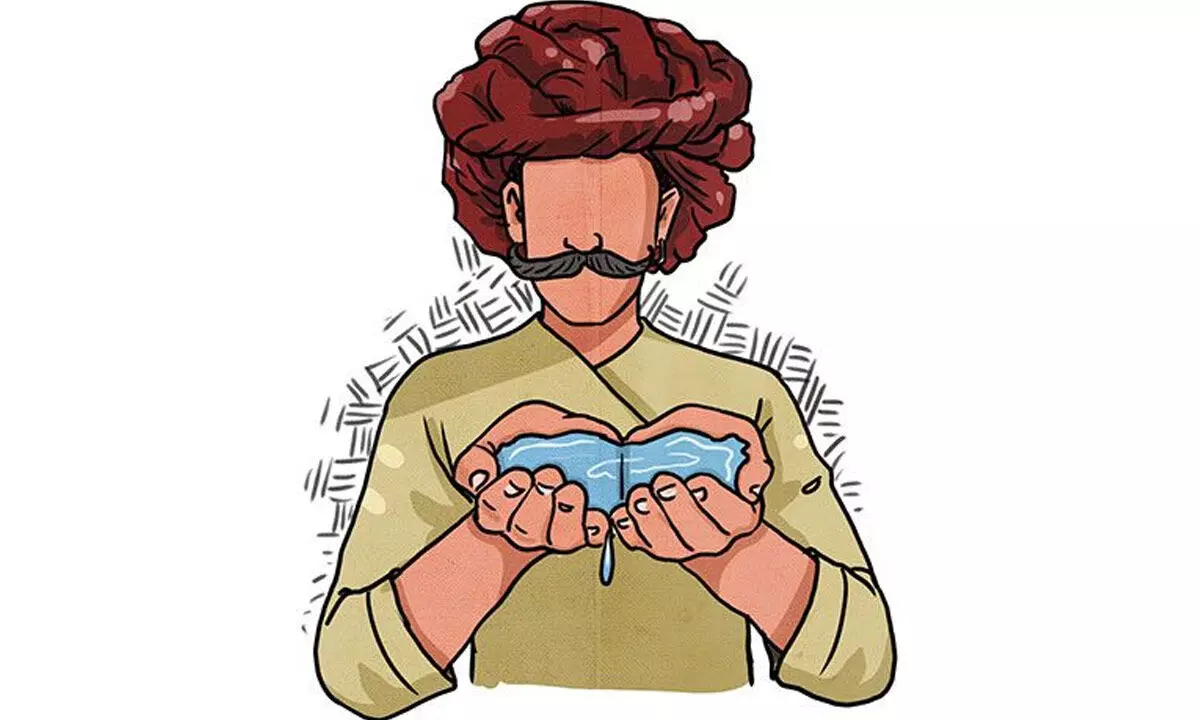Live
- They always want me to win, and now I feel lucky to have been offered a story like ‘Zebra’: Satyadev Kancharana
- ‘Democracy first, humanity first’: PM Modi in Guyana's parliament on two countries' similarities
- PKL Season 11: Telugu Titans register third straight win to top standings
- Is Pollution Contributing to Your COPD?
- NASA Unveils Underwater Robots for Exploring Jupiter's Moons
- Additional Central forces arrive in violence-hit Manipur
- AR Rahman and Saira Banu’s Divorce: Legal Insights into Common Issues in Bollywood Marriages
- 82.7 pc work completed in HPCL Rajasthan Refinery area: official
- Curfew relaxation extended in 5 Manipur districts on Friday
- Tab scam prompts Bengal govt to adopt caution over fund disbursement
Just In

In our world racked and wrecked by extreme weather events, it is hard to find nuggets of good news. But look hard enough and human endeavour shines through.
In our world racked and wrecked by extreme weather events, it is hard to find nuggets of good news. But look hard enough and human endeavour shines through.
Last fortnight, Down To Earth published an inspiring report on how communities in the desert of Rajasthan made full use of the very heavy rain that the region saw—it was a deluge, but they decided to store the water and use it.
These people may not know that what they are seeing this year, and now every year in terms of unseasonal events, is climate change. They may not know about climate agreements or adaptation goals, but they have shown us how best to adapt to such a crisis. This part of Rajasthan normally receives less than 300 mm of rain annually. But this year, the rain came before time, and it poured. The desert districts saw more than their annual rainfall in a matter of a month.
My colleague Anil Ashwani Sharma travelled to these districts to find out how people were coping with the ravages of the heavy rain and floods. We were expecting him to come back with stories of grief and despair. Instead, he found how in villages spread across the districts of Beawar, Pali, Barmer and Jaisalmer, communities and individuals had decided to make the best of the rain they received.
They had built, rebuilt and rejuvenated thousands of water structures which could capture every drop of rain. The ponds, he said, were brimming with water and people with joy.
In the village of Sendra in Beawar district, just as the rains came in May, the residents realised the opportunity to repair the existing water structures built using traditional knowledge—from the talab (large pond) to the nadi (small ponds in fields) to the tanka (tanks collecting rainwater from small catchments) to rooftop collection in every house. They also expanded and cleaned the catchment of each structure. Then as the rains came in June, all the 320 structures were nearly full; water level in wells had gone up.
But people did not stop there. Overnight, they dug trenches in the hill slope adjoining their village so that rain would not destroy their crops, but instead percolate into the ground. All this has meant that more water is now available for the next crop.
In Madhasar village of Barmer district, residents constructed 155 ponds in just two months, all to hold the precious rain. And in Sanwata village of Jaisalmer, most of the 400-odd water structures were desilted; people say they carry a stick wherever they go, so that they can keep digging to improve percolation.
It was no wonder that in each village, there was joy of rain in anticipation of living through the coming drought months with enough water to drink and irrigate crops.
This happened because communities were prepared to bring about change. First, a lot of effort has gone into bringing an appreciation of the value of decentralised water structures, built using traditional knowledge. In 1997 when our colleague Anil Agarwal (founder editor of this magazine) led the work to document traditional water wisdom, there were no takers for this solution. But we persevered and advocated how the knowledge published in our book, Dying Wisdom, could be part of water policy.
Then came the government’s Mahatma Gandhi National Rural Employment Guarantee Act (MGNREGA), which took this knowledge to another level. Under this employment programme, millions of water structures have been built across the country. Many of these structures have fallen into disuse or are just dysfunctional because of poor design. But as this monsoon season has shown, when people make water their business, they create magic.
There are many lessons we must draw from this work. First, we must understand the value of MGNREGA in our climate-risked world. This is perhaps the world’s biggest adaptation programme, where labour of people is paid for to provide a social safety net and this labour is used to build ecological wealth, which in turn builds resilience against variable weather.
Second, in the age of extreme weather—witness what is happening in a country like Spain where drought has been replaced by incessant rains—we need to learn to capture every drop of rain using decentralised water structures.
This is where this incredible work of the people of Rajasthan must be understood and emulated. And third, most importantly, we must salute human enterprise; ordinary people who have taken charge of their water future. They are the water warriors showing us the way ahead.
(Writer is Director General of CSE and editor of Down To Earth, an environmentalist who pushes for changes in policies, practices and mindsets; Courtesy: Down To Earth)

© 2024 Hyderabad Media House Limited/The Hans India. All rights reserved. Powered by hocalwire.com







